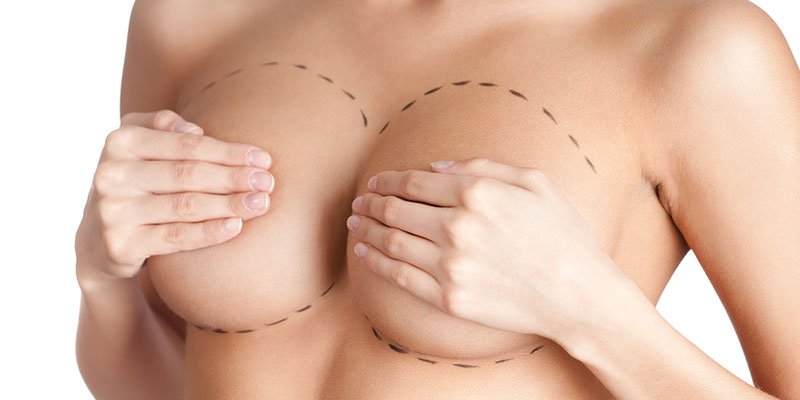Breast Augmentation
Having beautiful and shaped breasts is undoubtedly something that many women desire. This is why many women prefer breast augmentation today.
Who is done breast augmentation?
- Those with small breasts since puberty
- Patients who lose weight after pregnancy or in significant amounts
- Patients who lose their breasts as a result of breast cancer
- Patients who have no breasts, those who are small or asymmetrical in congenital diseases
- Patients who are uncomfortable with breast size and who want to have larger breasts more symmetrical,
surgery for volume, plump and upright breasts.
Silicone breast prosthesis is the most suitable and healthy solution for breast smallness. Augmentation
with adipose tissues from the individual may also be tried, but they are generally not preferred since they may melt and cause a reduction in volume. The most suitable patients for breast augmentation by fat injection are those who have more fat in the body. This also reduces the amount of regional fat.
How are the prostheses used in breast augmentation operations?
Silicone prosthesis is available in two types: drop (anatomical) and round. The patient 's chest structure, neck, shoulder-body relationship, breast skin, the patient's request and the suit of the surgeon according to the appropriate prosthesis is decided. The outer wall of the breast prostheses consists of a silicone sheath.
They are silicone gel products. Its walls are rough or smooth. Available in different sizes in terms of volume, base diameter and height. FDA approved, produced with the latest technology prosthesis breast augmentation surgery is very low probability of any health problems. Silicone prosthesis It was not associated with breast cancer. Breast prostheses are used for many years.They do not need to be replaced unless there are any problems.
Can breastfeeding people breastfeed?
This question is one of the most important questions for women. Many young women who are not mothers are therefore reluctant to undergo breast augmentation. However, research has shown that the applied prosthesis does not prevent breastfeeding.
How is breast augmentation surgery performed?
The operation lasts for 1-2 hours. The patient is discharged on the same day or overnight after hospitalization.
Silicone prostheses can be placed in three ways according to the location of the breast, under the muscle (Pectoralis major muscle), supra muscular or both sub-muscular and supra muscular (Dual plan). The prosthesis is most often located under the nipple fold, less frequently around the nipple, armpit area or belly area.
Breast augmentation surgery also eliminates very slight breast sagging. However, it is useful to include breast lift operations in medium and advanced sagging.
What are the points to consider in the postoperative period?
It is possible to see pain for the first 2 days to be reduced with painkillers to be given during prosthesis operations, with a little more in the prostheses placed under the muscle. Swelling and bruises are seen in and around the breast area . They usually disappear within two weeks. However, the swelling of the breast completely descends and the breast lasts for 6 months to 1 year. If the person does not do heavy work in the postoperative period, he returns to work and normal life after 3 days. It is recommended to avoid heavy exercise and lifting for about a month.
What are the risks that can occur with surgery?
Surgical bleeding and infection are rare but can be seen. Some patients may have decreased or increased sensory changes in their nipples. This is usually temporary. Against the prosthesis, the body produces a membranous substance called a capsule. This membrane does not cause any problems when it is thin . However, this capsule may reach medium and advanced levels in some patients . In this case, a secondary intervention may be required. The possibility of rupture of the prosthesis is unlikely, except in cases of severe vehicle trauma, such as in -vehicle traffic accidents, falling from a height, and cutting tool injuries.



